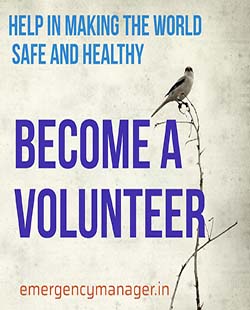
New Delhi, February 17, 2025 — A tragic stampede at New Delhi Railway Station has claimed at least 18 lives and left over 15 injured as thousands of Maha Kumbh pilgrims scrambled to board their trains. The disaster unfolded on the congested footbridge between Platforms 14 and 15, exposing serious crowd management failures in one of India's busiest transit hubs.
What Led to the Deadly Stampede?
Initial reports suggest that a last-minute platform change triggered confusion and panic among passengers. With trains already delayed and thousands of devotees waiting to travel, the sudden surge led to a deadly crush.
Eyewitnesses described chaotic scenes, with people tripping and falling as others desperately tried to move forward. The lack of proper crowd control, poor infrastructure, and inadequate security personnel turned the situation into a full-blown disaster.
Disaster Management Analysis: Why Did This Happen?
From a disaster management perspective, the New Delhi Railway Station stampede highlights the urgent need for better railway disaster preparedness. Here’s a breakdown of the key failures and preventable risk factors:
1. Lack of Risk Assessment and Planning
- Authorities failed to anticipate the massive crowd surge ahead of the Maha Kumbh pilgrimage.
- No structured queuing system or emergency evacuation plan was in place.
2. Inadequate Infrastructure and Congested Bridges
- The footbridge linking Platforms 14 and 15 became a deadly bottleneck.
- Many Indian railway stations lack wide footbridges, proper ventilation, and emergency exits—making them high-risk zones during peak travel.

3. Poor Crowd Management and Security Presence
- There were too few railway police and security personnel to regulate the movement of thousands.
- No real-time monitoring or early warning system was used to control the swelling crowd.
4. Failure to Learn from Past Stampedes
- India has witnessed multiple stampedes at railway stations and religious gatherings in the past.
- Despite previous tragedies, stampede prevention measures like controlled entry-exit points, digital crowd tracking, and emergency drills were not implemented.
5. Train Delays & Misinformation - Several trains were delayed due to congestion on the railway network. - Passengers, eager to secure a spot on their trains, panicked when announcements of changed schedules were made, leading to an unmanageable surge.
6. Panic & Stampede Trigger - Eyewitnesses reported that someone 'tripped' on the overcrowded footbridge, leading to a domino effect as people fell over each other. - In moments of panic, people tried to push forward, worsening the situation.
Government Response and Next Steps
Following the tragedy, Railway Minister Ashwini Vaishnaw announced a high-level investigation committee and deployed four special trains to manage the rush. Prime Minister Narendra Modi expressed his condolences, calling the incident "deeply distressing."
Opposition leaders criticized the government for failing to implement railway disaster preparedness measures, despite repeated warnings.
What Needs to Change?
For India to prevent future railway stampedes, disaster management experts recommend:
- Better crowd forecasting and digital monitoring at high-traffic stations.
- Wider footbridges, designated queuing areas, and clear exit routes.
- Trained security personnel at key transit points.
- Automated alerts and station-wide communication systems to prevent panic.
- Public awareness campaigns on safe crowd movement in railway stations.
- RPF need to be professionaly trained in disaster management and crowd control.Mostly they are involved in policing instead of protection of railway passangers and property.
A Wake-Up Call for Indian Railways
The New Delhi Railway Station stampede is yet another avoidable disaster that has claimed innocent lives. With India’s train stations handling millions of passengers daily, railway disaster preparedness must become a top priority. Authorities must take immediate steps to enhance safety protocols, improve crowd control, and modernize infrastructure to prevent another tragedy like this.
..... .... Login with Google and support us
Thanks


